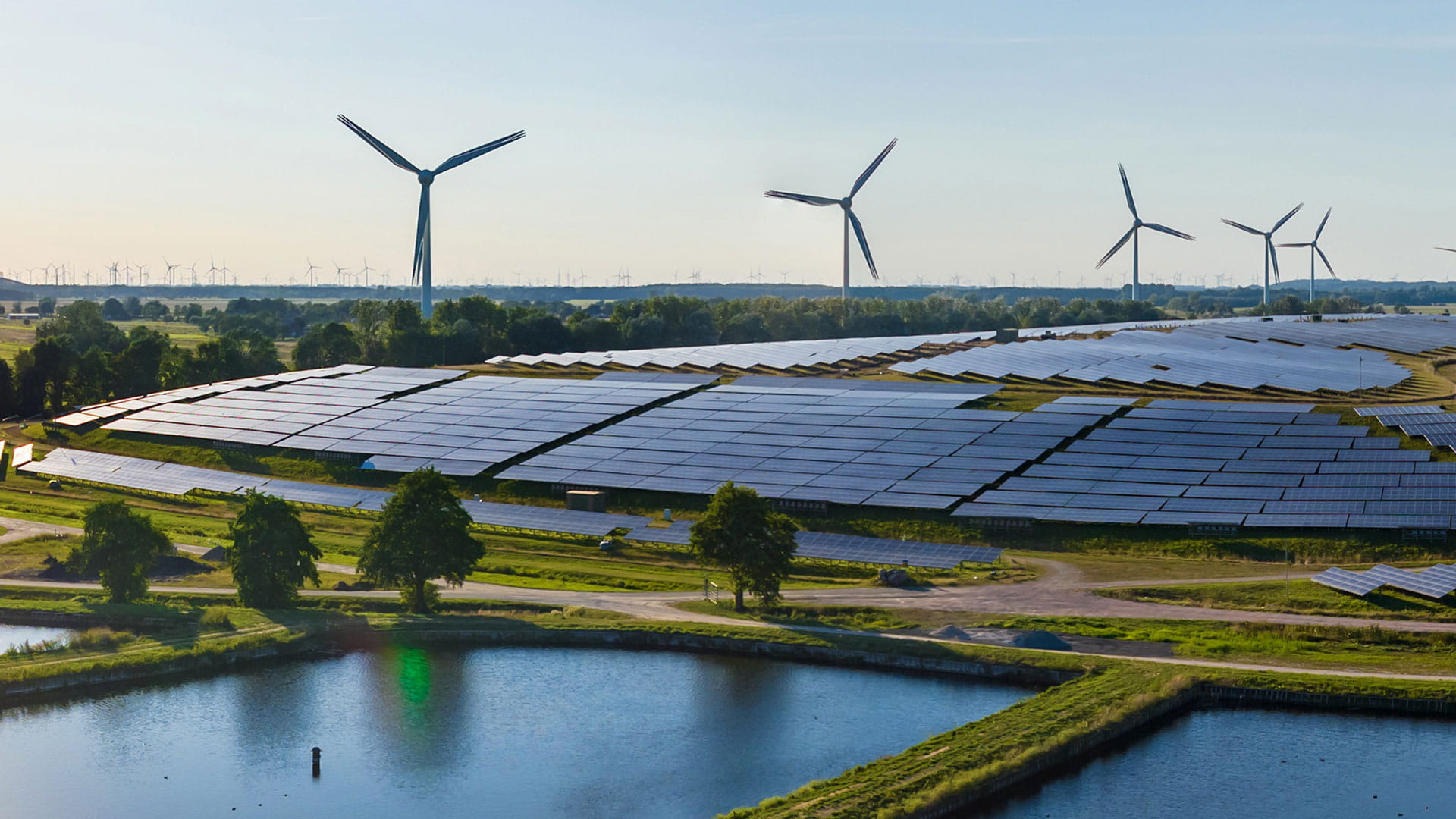Energy hubs: a solution to grid congestion on the path to net zero

Grid congestion is rapidly becoming one of the largest obstacles in the transition to a net-zero economy. For industries and municipalities, it creates significant challenges in balancing energy demand and supply, delaying developments in renewable energy adoption. Not only is grid congestion a pressing issue in the Netherlands, but it also grows globally already affecting the UK, EU, China and the US. The consequences of grid congestion could lead to economic losses estimated at €10 billion to €40 billion annually in the Netherlands alone. This demonstrates the critical need for innovative solutions like energy hubs.
Energy hubs: decentralised energy systems
Energy hubs are smart, decentralised systems that combine renewable energy production, energy storage, and peak-shaving to optimise the flow of electricity within a particular region. These smart hubs are both a technical solution and a framework for stakeholders – industries, municipalities and energy providers to collaborate and effectively balance energy supply and demand. The Netherlands alone could potentially house around 1,200 energy hubs which could collectively reduce grid congestion by up to 3.2 GW.
The implementation of energy hubs plays an important role in achieving a sustainable and decentralised energy system by 2030.
There are four main types of hubs:
- Energy hubs on industrial estates: Designed for industrial zones with significant energy consumption and renewable energy generation.
- Energy hubs for large-scale energy users: Focused on balancing the energy needs of individual large-scale energy-intensive businesses, such as factories or data centres.
- Energy hubs in the built environment: Engineered for urban areas, these hubs help manage the energy demand of residential and commercial buildings.
- Energy hubs for sustainable mobility: Geared towards supporting electric vehicle charging infrastructure and other mobility solutions.
These hubs are capable of reducing peak loads on the grid, particularly in industrial areas and high-demand locations. This holistic approach ensures that different sectors of the economy contribute to the reduction of grid congestion and support national and regional energy goals.
The impact of energy hubs on grid congestion and peak-shaving
This form of peak-shaving helps stabilise energy prices for consumers and businesses and significantly reduces the risk of blackouts. Moreover, the long-term economic benefits are clear: addressing grid congestion through energy hubs can prevent billions in annual economic losses, particularly in countries like the Netherlands, where this issue is most acute.
Collaboration in complex systems
A common issue is navigating the maze of energy data required to analyse the potential of an energy hub. Grid operators are often criticised for not providing enough clarity on this, and while progress is being made, the data infrastructure is still incomplete.
More importantly, energy hubs involve a wide range of stakeholders and roles, all of whom need to collaborate on energy management. Furthermore, expertise may come from unfamiliar sectors, outside of the established networks companies are used to working with.
A third challenge is the multiple scales within the energy system that energy hubs must straddle – balancing energy supply and demand at the level of individual companies, industrial estates and the broader region. Additionally, coordination with both regional and national grid operators is required. Energy hubs can operate successfully at all these levels – the key is to optimise grid capacity by creating the right connections at the appropriate scale.
The future of energy hubs: what’s next?
The development of an energy hub is a multifaceted process that requires the careful integration of technology, organisation, legislation and project realisation. This complexity requires a process filled with innovation, problem-solving and trust. For industries and municipalities alike, the first step involves exploring the potential of energy hubs to meet their unique needs. Over the coming blogs, we’ll guide you through this process step-by-step for each specific type of energy hub.
In the next blog, we will explore the potential of energy hubs for the built environment and how they can drive further progress towards a sustainable energy future.
Want to know more? Contact our experts or continue reading about Energy Hubs and learn how we can help your energy resilience by making new energy hubs a reality.
Contact our experts
Always up-to-date on latest energy insights?

![[object Object] [object Object]](https://www.royalhaskoningdhv.com/-/media/images/employees-profile-pics/g/graaf-ron-de.jpg?h=400&iar=0&w=400&hash=1ECB6FB65457FFA3C574DC1BBD7BCBE7)